The switch-statement is a powerful tool for handling case distinctions in Java. Instead of creating complex if-else chains, the switch statement allows you a clearer and more structured way to make decisions based on variable values. In this guide, you'll learn how to implement the switch statement, what advantages it offers, and how you can use it effectively in your programming.
Main Insights
- The switch statement simplifies case distinction compared to if-else constructions.
- It can operate with integer types and strings (since Java 17).
- Each case must be terminated by a break statement to control the execution of the switch.
- A default case allows you to define an action for all unconsidered values.
Step-by-Step Guide
1. Basics of the switch statement
The switch statement is used to check a variable against different values and execute corresponding actions. It is particularly useful when you have many possible values that need to be evaluated. A typical example would be controlling a household appliance, such as a dishwasher.
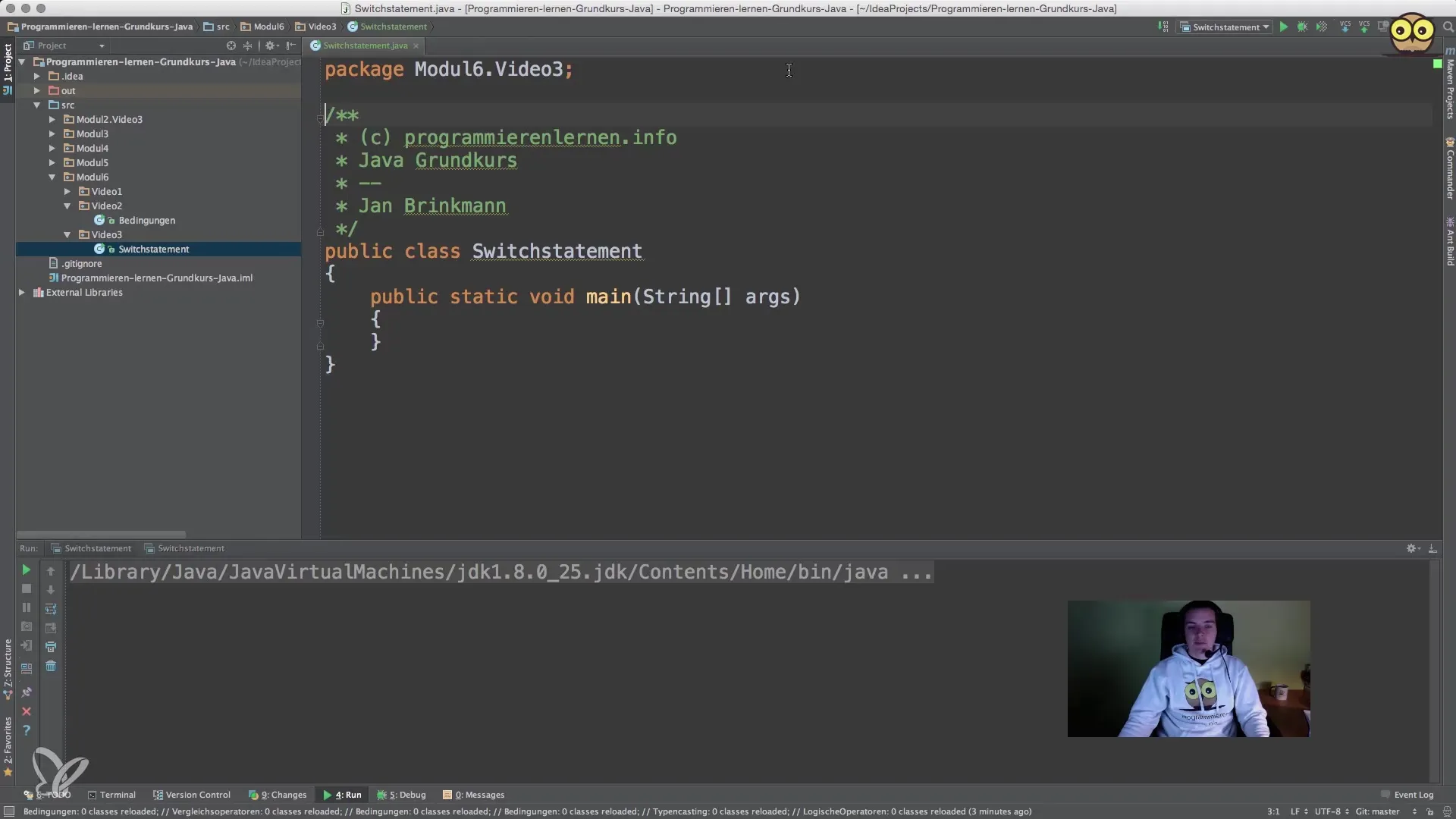
2. Graphical User Input
Before you work with the switch statement, you need to collect user input. You can easily achieve this with the JOptionPane class from the javax.swing package. First, you add the necessary import statements to make graphical input available.
3. Processing User Inputs
To process user inputs, you create an input field where the user can enter a value. You can use integer values for the decision, such as door 1, 2, or 3.
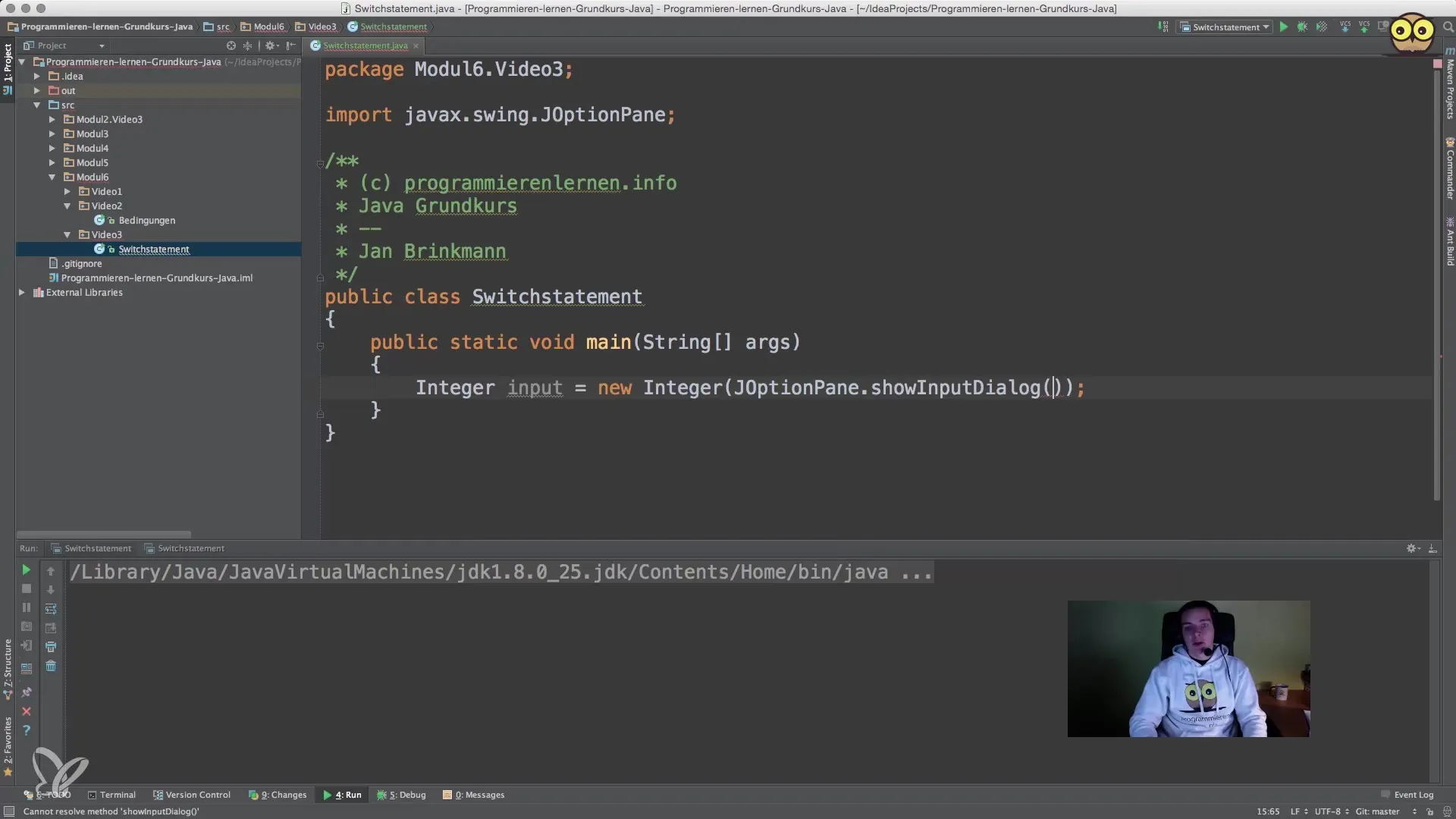
4. Implementation of the switch statement
Now you use the switch statement to process the user's decision. You check which value the user has entered and execute different actions based on that value.
5. Case Distinctions with Cases
Within the switch block, you define a case for every possible situation. When a specific case applies, you execute the corresponding statements and then terminate the block with a break statement.
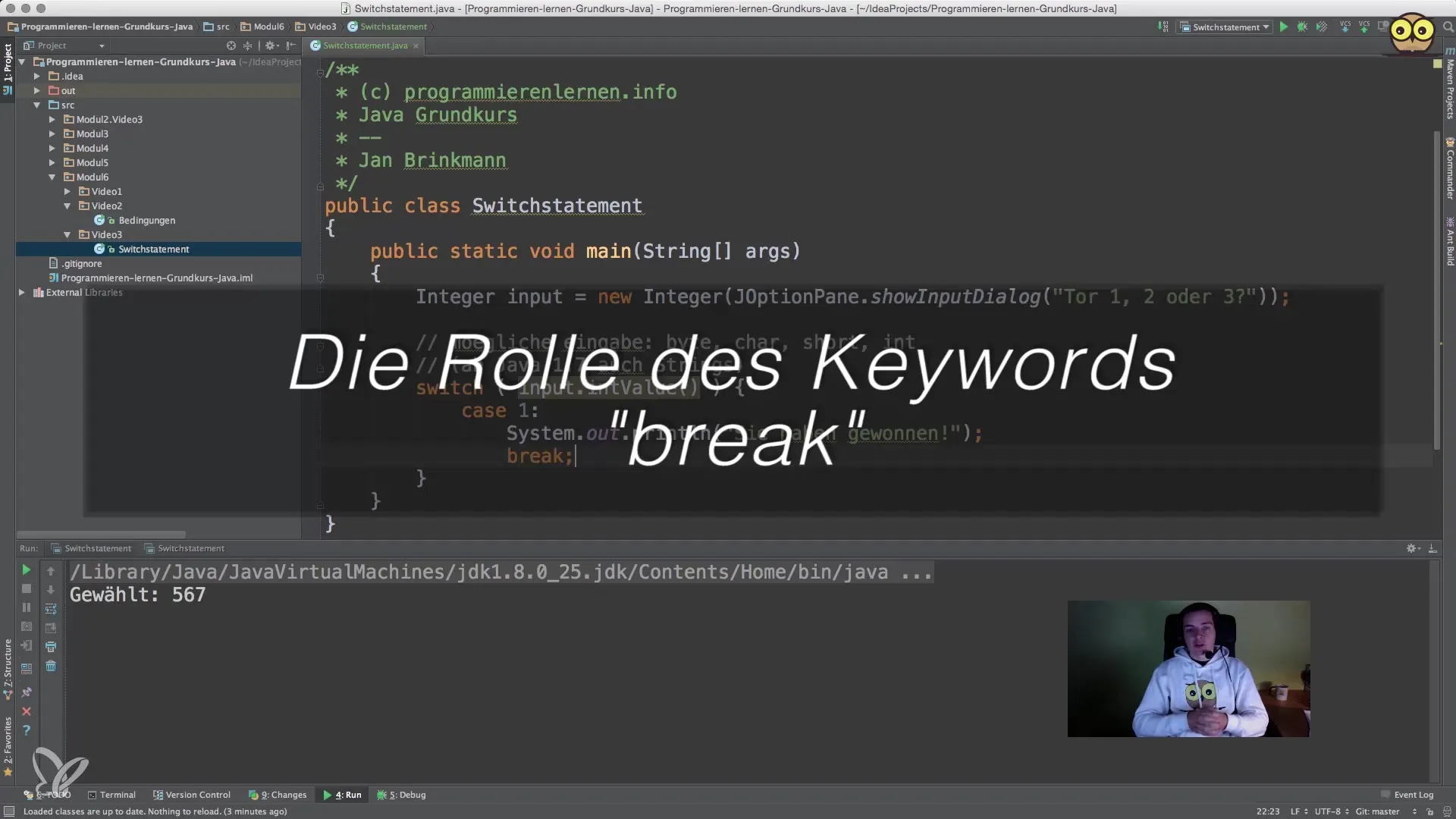
6. The Importance of the break Statement
The break statement plays a central role. It ensures that the execution of the switch statement stops after the corresponding case. If this statement is missing, subsequent cases may also be executed, which is often not desired.
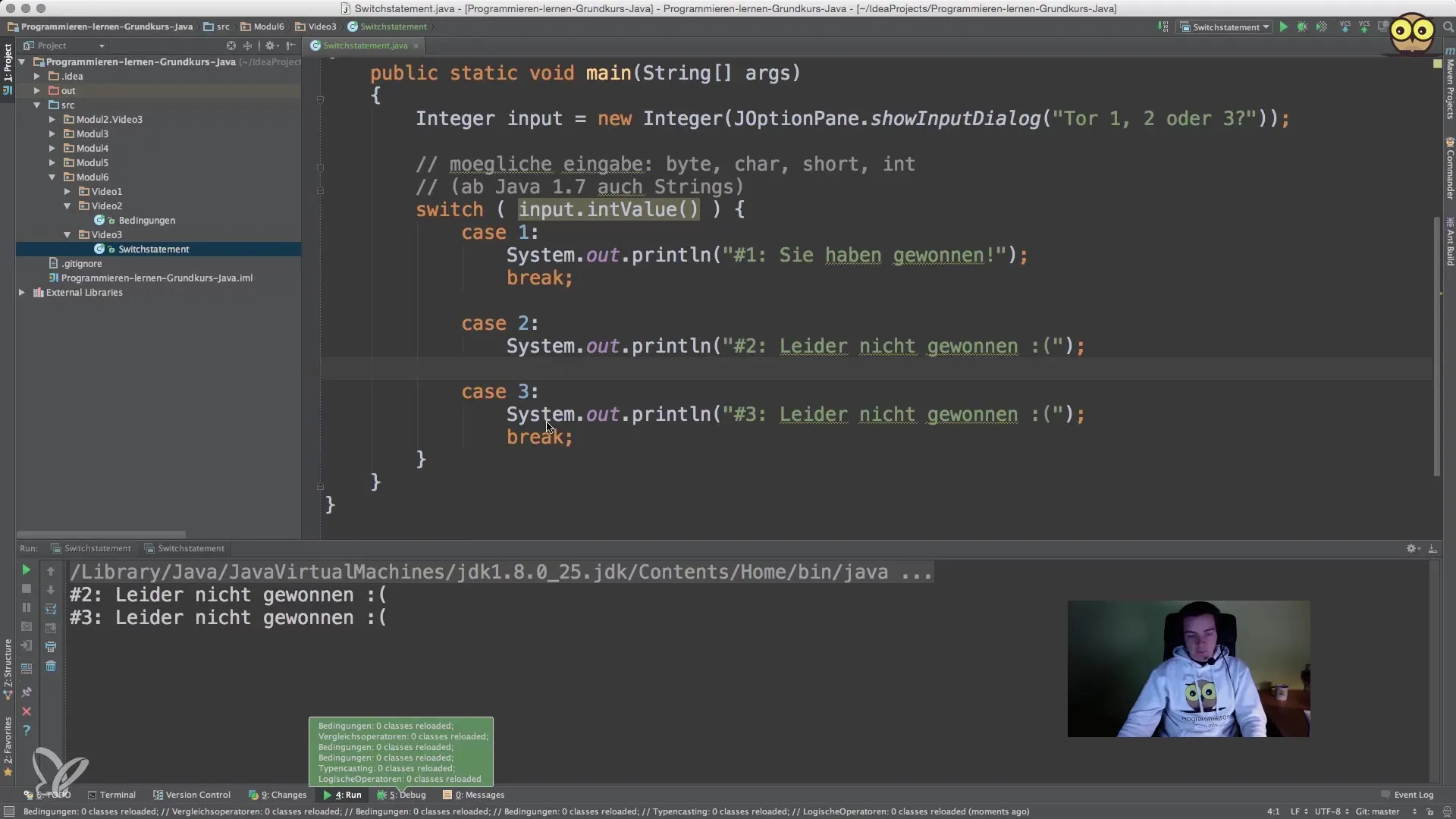
7. Using the default Case
The default case is executed when none of the defined cases apply. This is particularly useful for providing feedback to the user if they have entered an invalid value. Here, you can output an error message or a general notice.
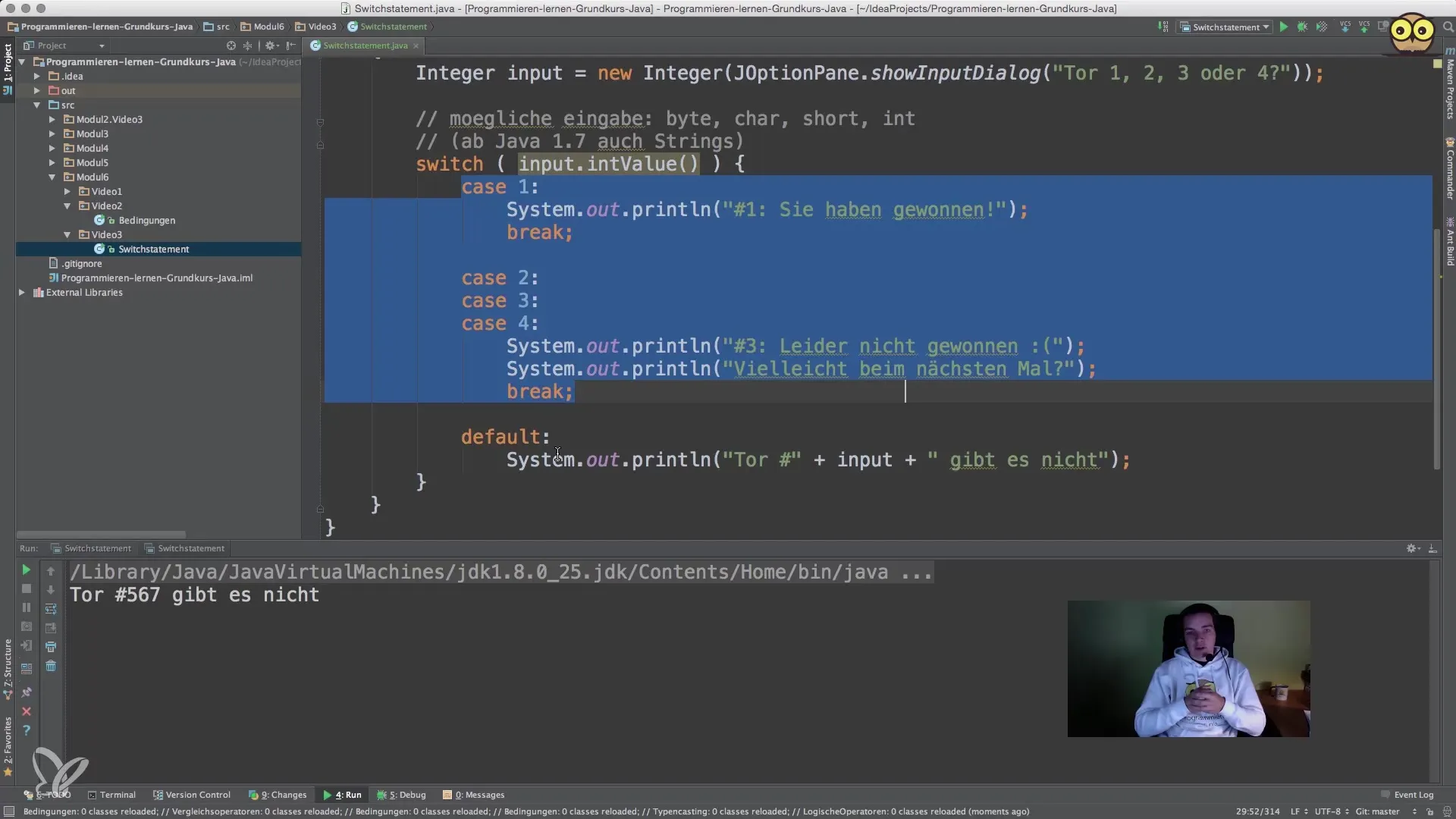
8. Exceptions in the switch Statement
Another essential topic is exceptions that can occur when the user input does not match the expected data type. It is important to ensure that you use the correct data types when processing inputs to avoid runtime errors.
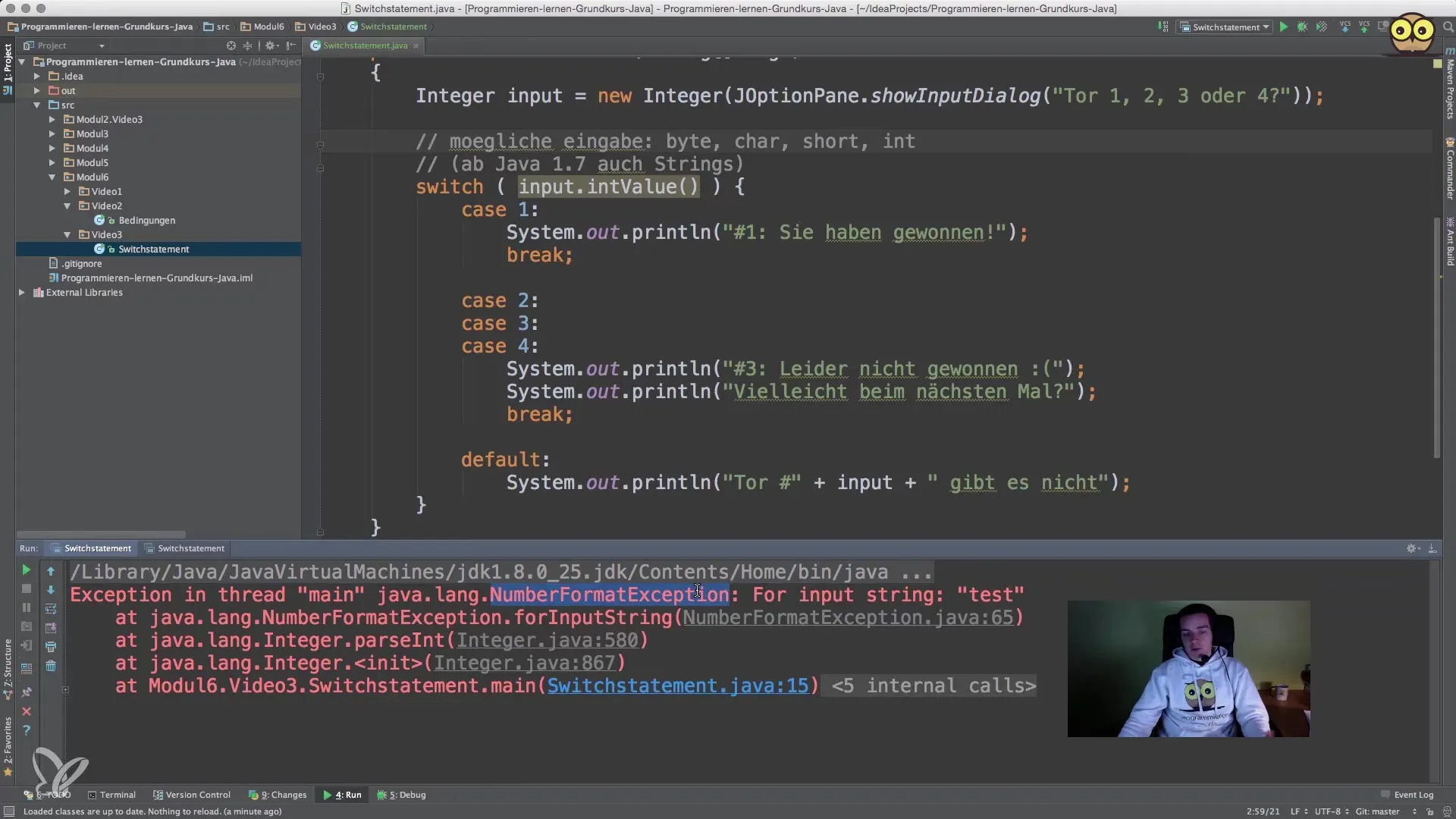
Summary – Switch Statement in Java: Mastering Case Distinctions
The switch statement is an effective means of handling case distinctions in your Java application. It simplifies the code and allows for a clear structure of decisions made based on user inputs.
Frequently Asked Questions
What is a switch statement in Java?A switch statement is a control structure that checks different possible values of a variable and executes the respective action.
When should I use a switch statement?A switch statement should be used when you have many possible values that need to be checked to make a clear and readable decision.
What happens if I forget the break statement?If you forget the break statement, the code will continue to execute even after the current case, which can lead to unexpected results.
Can I also use strings in a switch statement?Yes, since Java 17, it is possible to use strings in the switch statement.
How do I handle invalid user inputs?You can use a default case to output an error message or a general notice when the user enters an invalid value.


